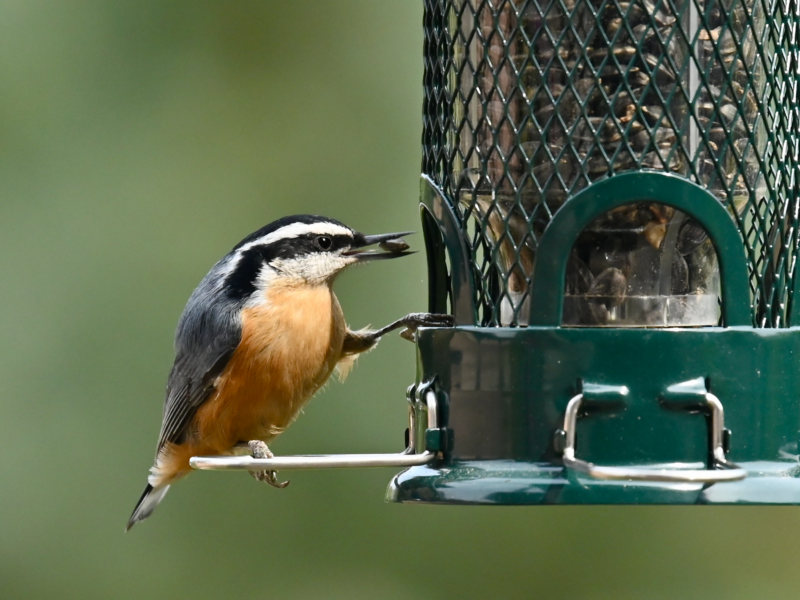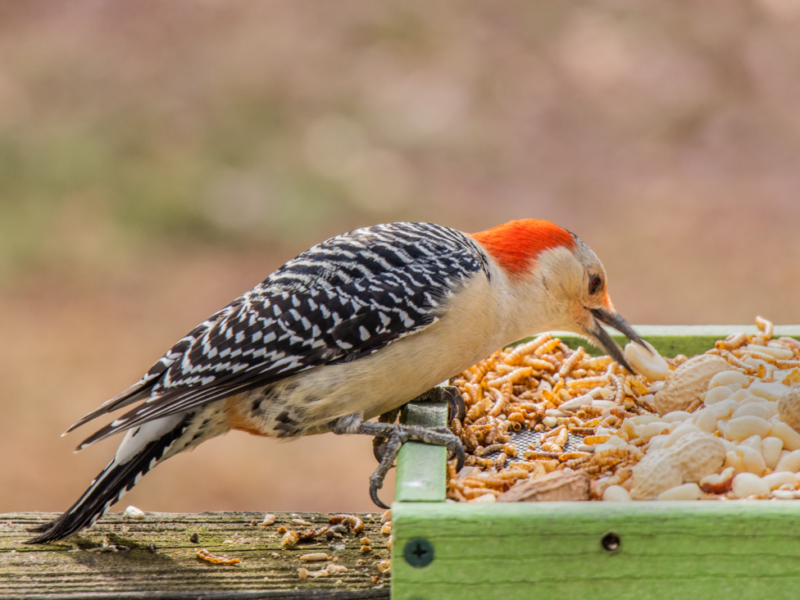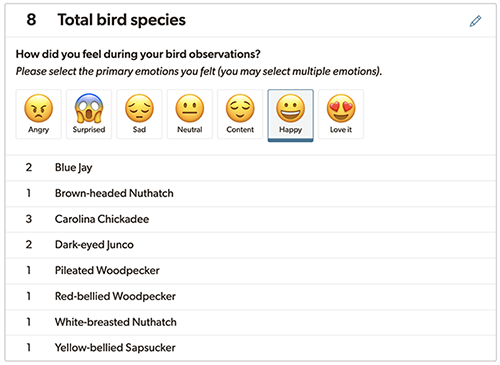|Red-breasted Nuthatch by Bill Schneider/Macaulay Library | Project FeederWatch is delighted to announce that, thanks to grant funding, participants are now able to record several types of additional information with their regular bird counts. Along with different bird species you...

|Red-breasted Nuthatch by Bill Schneider/Macaulay Library |
Project FeederWatch is delighted to announce that, thanks to grant funding, participants are now able to record several types of additional information with their regular bird counts. Along with different bird species you see and their behavioral interactions, you may now record types of mammals seen during your count, specific signs of disease in birds, bird mortality during counts, management activities conducted at your site, and feelings about what you’ve seen during your counts. If this sounds exciting to you, great! We hope you will contribute! But if it sounds overwhelming, know that all of these additional data are optional, so if you prefer to stick to only the traditional bird counts, that is completely fine.
Collecting these new types of data is exciting for several reasons. You will now be able to keep track of more details about your count site for your own purposes, so we hope FeederWatch will be an even more useful tool for you! Additionally, we hope that from these additional data we will be able to gain a better understanding of how people and wildlife interact. We know that people have an impact on birds, but exactly how that impact plays out over time is something we don’t understand very well, so we hope these new data will help. But perhaps most exciting is the possibility of learning how birds impact people! By recording your own feelings about what you see at your count site, we hope to get a better understanding of how the things we observe around our homes impacts our well being. Thank you for any data you are able to contribute!
For FeederWatchers who have participated in the past, the initial part of entering counts will look very similar to how it has always looked, with new optional sections added to the bottom of the page and new navigational shortcuts on the sides of the screen. When you start entering a count through our website or mobile app, you will see the sections that need to be completed on the left side of the screen. In the first three sections, you will still select your site, count dates, time watched, effort, snow depth, and bird counts, as you have in the past. As you complete sections, these details will show up on the right side of the screen.
When you are done with each section, you may scroll down or click on the next section in the navigation on the left.
The next three sections include the new questions and additional details. The Mammal List can be used to report all mammals that you observed in your count site during your count. Here you will be able to tally domesticated mammals like cats and dogs, small-size mammals like squirrels and chipmunks, medium-sized mammals like opossums and raccoons, and large mammals such as bears or deer. If you observe something not on the list, just write it in the last option of “other.”
The Sick and Dead Birds list will allow you to report any disease you may see at your count site and add any observation for dead birds that you notice. For sick birds, you can now list symptoms such as red and swollen eyes, odd growths, lethargy, and more. For any dead birds reported, you can check off any incidence you may have observed during your count, such as illness or predation, or you can check “unknown” if you are unsure what caused the death.
The next section will allow you to record Behavioral Interactions during your count. Just as in the past, you may select the source species and target species from a list of species you reported during your count, as well as the interaction type between the two species, all using dropdown menus. Interactions you can report are still limited to displacement and predation. With our new option to record mammals, however, you may add interactions between mammals and birds, rather than just interactions specifically between bird species. In this section, you can also add any additional comments about the behavior and list how many times you witnessed it between those two species. Interactions you report will now show up on a list right on the count page.
The final section allows participants to record management activities they have taken between counts. This management activity includes changes in the amount of food offered, the addition or removal of feeders, the addition of mammal deterrents, or whether and how often feeders were cleaned.
Throughout data entry, you may now report on how each aspect of FeederWatching made you feel. If you opt into reporting feelings, you can report them by clicking on one of the emojis listed in each section, ranging from angry or sad to neutral or happy.
When you have finished entering all the information you wish to enter, you may click the blue button on the right of the page to review and submit your count. You are welcome to limit your reports to bird counts, as you have in the past, and skip the new fields. On the summary page, please be sure to check that everything you’ve reported for this count is correct. Upon clicking the “Finish Count” button, if you opted into being asked about feelings, you will be asked a final question about how it felt to observe your bird feeding areas for this two-day period, and then you may submit your count when ready.
Thank you for all of your past or future contributions to FeederWatch, and we hope you enjoy all these new types of data that you can collect. We look forward to hearing about your FeederWatching experiences!

The post New Data Entry Options: Record Mammals, Management Activities, and More appeared first on FeederWatch.















